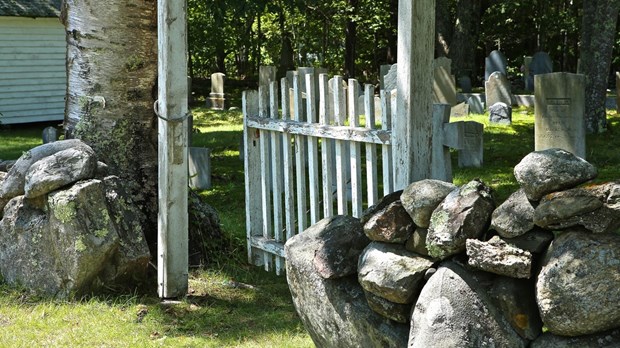
I receive an email from my mother in the evening. Nana is having trouble breathing. The Hospice nurse says she will die soon.
I have been expecting this news for weeks. My grandmother, Nana, just celebrated her 93rd birthday. In recent years, she has lost thirty pounds, and although her face lights up with a smile every time a new person enters the room, although she tries to play hostess every time we come to visit, she is ready to go. Death will bring peace that living cannot. Still, my mother’s email stings a bit, and for the first time I feel in my body the reality of losing this woman who has been a faithful, steady, loving presence all my days.
I take a short walk with my children that night. “I wanted to let you know that Nana is probably going to die tomorrow,” I say.
William, age six, whips his head around to look in my eyes. “I want to be there. I want to say goodbye.”
“Sweetie, you said goodbye when we visited a few weeks ago.”
His face relaxes a bit with the reminder. Penny, age eight, chimes in, “That’s good for Nana, but Geeka will be lonely. There will be no one to keep him company.” I squeeze her hand as my throat tightens. I cannot bring myself to reply.
“Geeka will be sad,” Marilee says.
William, walking ahead, turns toward us. “And our Nana will be sad. And you will be sad.” A few steps later, he stands still and says, “And my eyes are wet!” His voice holds surprise, as if he hadn’t expected the tears.
When we get home, we gather in a circle to pray. We ask for peace for Nana and comfort for Geeka. I am grateful for my children’s presence. Their simple reminders that death is sad and certain and that we do not need to be afraid. Their simple reminders—through their warm bodies and eager faces and earnest compassion—that life continues, that life is a good gift.
I learn later, after we have read stories together and I have sung to them and they have drifted into sleep, that Nana has already died. She died while we were praying for her, as it turns out, and again, I am grateful. For the mercy that death can bring. For a sense of connection through prayer in those final moments of her life.
In the morning, after I share the news, the children decide to make cards for their great-grandfather.
“I’m so sore [sorry] that Nana died,” writes William.
“Nana died already in her bed,” writes Penny. “I liked reading with her. Do you like reading? I hope you feel better with your sadness.”
Marilee colors rainbows.
A few days later, we arrive at the graveyard. It is the first day that feels like winter, with cold that creeps beneath my jacket and under my scarf. Standing in the cemetery with our children, I am glad that my grandmother chose the traditional route of burial rather than the more modern (and more ecological) way of cremation.
I do not want to see her ashes scattered to the wind, as if she has become an abstract being, at one with the universe. I want to remember her as someone with a body, a body vulnerable to sickness and death, a body that in its vulnerability was also open to love. And I want to be able to come back here, back to this particular place in this particular town, to visit her grave and the graves of the others who died before her.
We stand in a line with the coffin (“a bed inside a box for Nana’s body,” we told the kids) in front of us, supported by large metal poles over a rectangular hole in the ground. The hole in the ground offers a visual enactment of our common mortality—ashes to ashes and dust to dust. The graveyard itself acts as a testimony to the inevitability and finality of death. But as we stand together, the minister reads from Scripture. These ancient words of defiant comfort words hover above the coffin, holding out hope that this inevitable and final word has been overcome: “Where o death is thy victory? Where o grave is thy sting?”
We head to the church, where the emphasis turns to celebration. Together we remember and celebrate the life of this remarkable woman who died within one mile of her birthplace, who cooked countless casseroles for new mothers, cancer patients, and bereaved spouses, who invited dozens of new people over for dinner after meeting them for the first time on a Sunday morning, who lived a life of unassuming service to others, with much laughter along the way. Perhaps more importantly, together we celebrate the work God has done for us and for her. We celebrate not only because of the memories of love, but also through the particularly Christian hope of resurrection.
I am grateful for graveyards, for their unflinching testimony to the generations past, for their insistence that our bodies cannot live forever in spite of our medical advances and our attempts to defy aging and death. I am grateful that my children were introduced to death through this grief that was contained by hope. Most of all, though, I am grateful for the one whose body went into the grave and rose again.
A few days after the funeral, our three-year old daughter Marilee says, “Mom, Nana is more alive than we are. Because she’s in heaven.”
Support our work. Subscribe to CT and get one year free.















